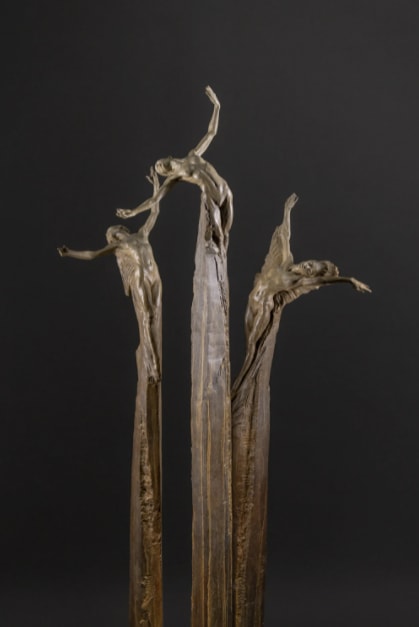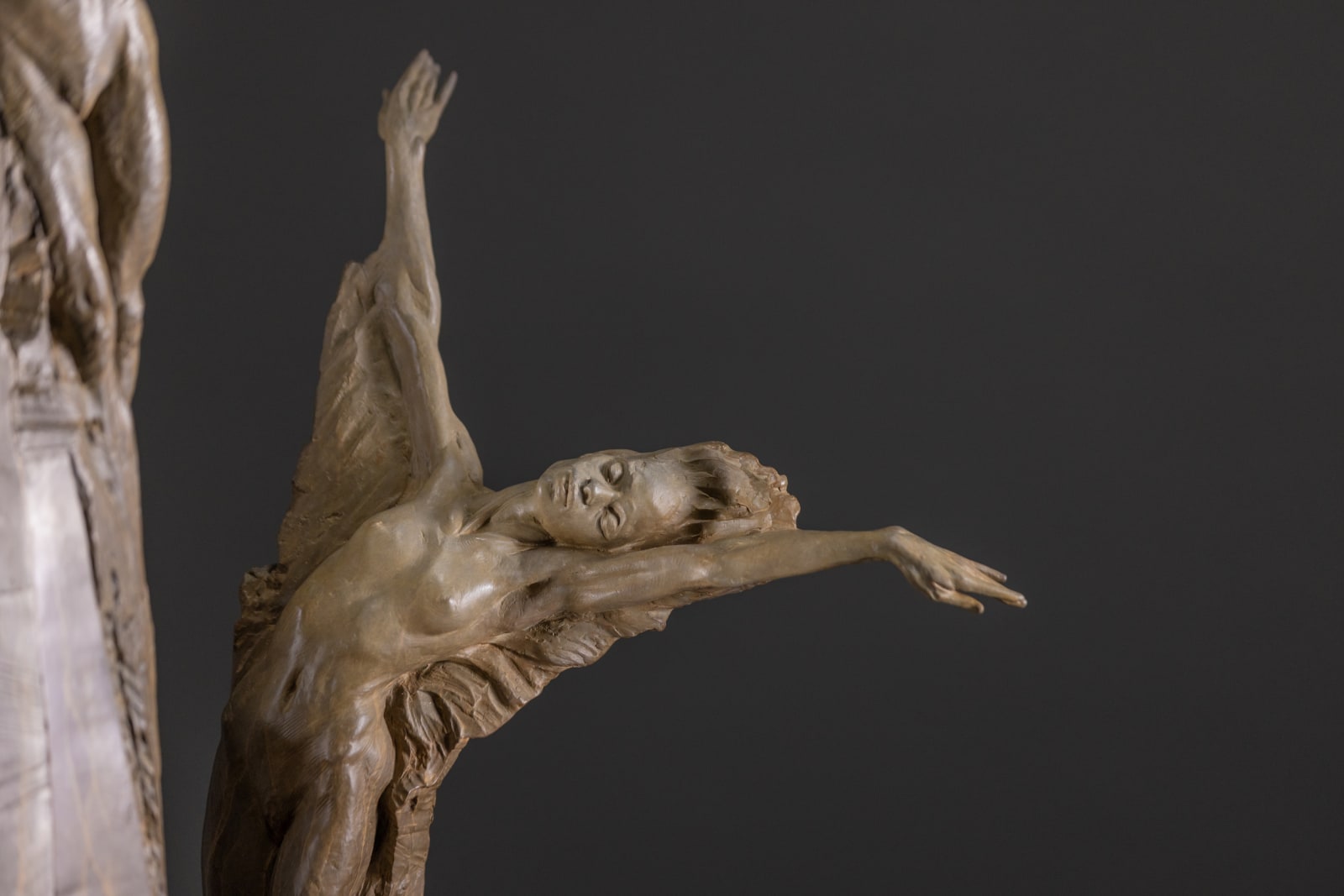Richard MacDonald American, b. 1946
Gathering of the Graces, Quarter life, 2022
Bronze
102 x 33 x 33"
Further images
Greek mythology records the Three Graces, considered the fairest daughters of Zeus and Eurynome, as representatives of the blessings of nature. Followers believed that each spring, their fertility dance caused...
Greek mythology records the Three Graces, considered the fairest daughters of Zeus and Eurynome, as representatives of the blessings of nature. Followers believed that each spring, their fertility dance caused seeds to sprout and flowers to bloom. On another creative level, the young goddesses were believed to influence artistic achievement. While Boticelli’s expression of the soft, linear forms inherent in the Three Graces influenced the rebirth of classical mythology, Richard MacDonald's original Three Graces inspired to foster the renaissance of figurative art with his own interpretation of “grace.” Employing the classical tradition of undulating lines, precise contour and soft, fair forms, MacDonald recaptured the perspective of the masters. In "The Gathering of the Graces", MacDonald provides a modern interpretation to the classical mythological story. Rising out of the architectonic strata of time, the three goddesses surge up from the earth in the form of a living tree to generously share their gifts with humanity.













